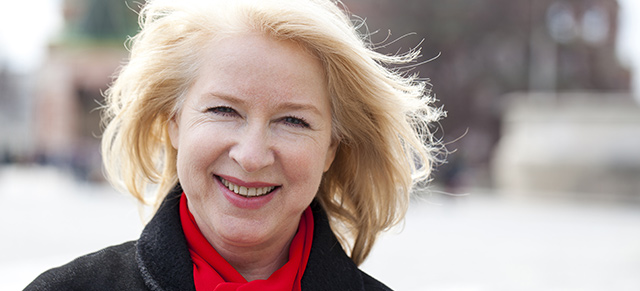Rhinoplasty 101: Complete guide to nose surgery
If you’re considering nose surgery (rhinoplasty) for either cosmetic appearance or to help with breathing issues (or a combination of both), our Plastic + Hand team has the most qualified rhinoplasty surgeons in Maine.
We know that you may have some questions before you book your consultation, and this Rhinoplasty 101 Guide will cover everything you need to know about nose surgery, including whether you’re the right candidate for nose surgery to the final expected results.
We’re dedicated in making this the best (and most informed) experience for you, so let’s get started.

Why and how rhinoplasty can help
Most healthy people who are dissatisfied with either the appearance or function of their noses are candidates for nasal surgery (rhinoplasty). Typically procedures can be performed following completion of nasal development, usually after 15-16 years of age. Surgery on the nose in patients younger than this is usually reserved for congenital problems and consequences of acute injuries.
While patients typically come into the office (often by referral) due to breathing problems caused by a fractured nose or previous nasal injury, there are a number of patients coming in with entirely cosmetic concerns.
Rhinoplasty can help patients primarily for the 5 following reasons:
1. Form and function
The nose is one of the structures of the body where its function truly follows its form.
Here’s a couple examples where form needs to be changed in order to improve function:
- Straightening a crooked nose to improve airflow
- Widening a very narrow nose that doesn’t breathe well due to small nasal passages
This also means that any cosmetic change performed on the nose (other than removing or flattening out a dorsal nasal hump) will likely have some effect on its function. For example, let’s look at people who want to make their nose appear smaller or narrower – a common request for a cosmetic rhinoplasty.
Making a nose smaller by itself can make breathing worse, so it’s important to counter this potential complication with internal work if that patient is deemed at risk for breathing issues during consultation. Many patients are surprised that cosmetic work goes hand-in-hand with airway work, but it’s necessary to make sure breathing function remains adequate in any nose surgery, and therefore selecting a surgeon who is mindful of this is critical for good short- and long-term outcomes of both functional and cosmetic nose surgery.
2. Anatomy
The anatomy of the nose consists of two nasal bones (comprising the upper 1/2 – 1/3 of the nose), and five cartilages including the septum which divides the left side from the right side, paired upper lateral cartilages (side walls of the A-frame tent so to speak), and paired lower lateral cartilages which help support the nostrils. Internally, there are three turbinates along the sides of the nasal walls—that help humidify the air we breathe by increasing the surface area, and the nasal septum which is frequently “deviated.”
Any of these individual components can cause breathing issues or structural/cosmetic issues by themselves, but usually it’s a combination of these structures that requires fixing through rhinoplasty.
p.s. What about sinuses? While these connect to the nose and help with air humidification, they don’t typically affect breathing, but can be affected by poor breathing.
3. Breathing issues
Rhinoplasty can be highly effective for improving breathing issues, understandably a problem that patients want fixed for their quality of life. There are two types of breathing issues—fixed and dynamic—explained here:
Fixed obstruction: Fixed obstructions include things that physically block the airway such as:
- A broken nasal bone
- Deviated septum
- Large turbinates
- Osteophytes (bone spurs that are bony protrusions that form along the bottom of the septum which can block the airway)
Fixed obstruction treatment: Typically, these obstructions can be initially managed with medicines such as decongestants or anti-allergy medications, but usually fixed obstruction requires surgery to correct since it’s—at its heart—a structural issue.
Dynamic obstruction: Dynamic obstructions are obstructions that occur during breathing, meaning your nose starts to collapse or obstruct during faster breathing such as during exercise. This can be due to bone, soft tissue, cartilage, or a combination of any of these issues. It is typically associated with:
- A narrow nose by nature
- A nose narrowed or deviated from crooked bones or prior fracture/injury
- A tall nose
- An internally deviated septum
- A “saddle” nose with overall poor cartilage support either from naturally weak cartilages, aging, or multiple nasal injuries (boxers for example)
Dynamic obstruction treatment: Since these obstructions often cause the nose to collapse in with breathing, people typically use things like nasal breathing strips or nasal stents to keep their nostrils open at night (these are different than a sleep apnea mask).
Typically, long-term dynamic airway collapse requires surgical correction to help reinforce and straighten the internal structures of the nose to ensure better airflow and to support the nasal sidewalls and nostrils—all to prevent collapse.
It’s also important to note that a fixed obstruction is frequently associated with a dynamic obstruction, and you can discuss this more with your surgeon.
4. Septal correction (“Septoplasty”)
It is pretty common for patients to have straight noses with no issues about their nasal appearance but seek a rhinoplasty to fix breathing issues from a deviated septum.
The septum divides the right airway from the left airway. When a septum “deviates,” it means that it moved over in a way that makes one airway larger and the other airway smaller, or simply creates an area of airway narrowing on one side. Occasionally it can have an “S”-shape and deviate into both sides, creating bilateral obstructions.
It may be surprising to learn, but the vast majority of people don’t have a straight septum. But, for many people, this doesn’t cause any breathing issues, since the deviation isn’t enough to impact the airway.
However, a deviated septum (from development or injury) can cause breathing issues that require surgery. Sometimes, surgery on the septum alone can help improve airflow, and it won’t require structural surgery to the nose unless the patient would also like to make some cosmetic changes (narrowing the tip or straightening the hump) that can be performed at the same time as septal work. If you need surgery on your nasal septum for breathing and also desire cosmetic changes, it is best to perform these surgeries at the same time since harvested septal cartilage is frequently used for grafts during cosmetic rhinoplasty.
5. Turbinates
Do you ever wonder why you’ll experience one nostril being blocked off, only to find that two hours later it’s perfectly clear but the other one is now blocked? This is due to the nasal cycle, a function of the turbinates.
Located on the internal nose lateral walls, there are three turbinates on each side of your nose. Turbinates help regulate airflow, and help to warm and humidify the air we breathe in.
Turbinates are able to swell up and block airflow, typically occurring as part of the nasal cycle. Often times, it’s dry air, allergens in the environment, or the patient’s allergies that will contribute to the swelling. When swollen they will slow down airflow on that side, allowing that side of the nose to “rehumidify.” The normal function of the turbinates is to help regulate airflow by swelling, typically when the nose dries out. They also serve an immune function and environmental allergies can leave them swollen despite the usual “nasal cycle” causing chronic obstruction.
Many patients with enlarged turbinates have a long history of congestion and may also have a runny nose or “sinus issues” since their large turbinates may prevent the sinuses from draining normally. These patients may have had one or more courses of allergy medicines to help treat this, but the breathing issues often get worse with age as the turbinates may become “senile.” At this point, the turbinates no longer have the ability to shrink in size and remain a fixed obstruction to the airway.
Since turbinates can become so enlarged to block the airway partially (or completely if they are big enough to touch the septum), they can be surgically reduced. Turbinate reductions are often done at the time of the septoplasty or rhinoplasty to further improve breathing capabilities.
How rhinoplasty works
Before surgery, you and your surgeon will decide on the rhinoplasty that is right for you—whether this is strictly a cosmetic procedure, or if it will also involve airway work.
You’ll also agree on realistic expectations prior to the surgery, discussing how “different” you’d like your nose to look—whether this is a more subtle or dramatic change, whether these changes are possible, and if they will potentially have an effect on your breathing following the procedure.
During the rhinoplasty surgery, your surgeon will reshape your nose by restructuring the cartilage and bone through small incisions. Most or all incisions are made inside the nose, however in “open rhinoplasty” there will be a small scar across the columella as the only external scar.
The actual rhinoplasty surgery will take about 1.5 hours for simple revisions or closer to 3 hours for more complicated surgeries that involve both airway and cosmetic issues. For more visual details about this rhinoplasty procedure, you can check out this 3-D nose surgery animation.
What rhinoplasty recovery is like
As with any surgery, there is short-term post-op recovery and longer-term healing.
Immediately after surgery, you’ll receive specific post-op instructions that are tailored to your individual procedure and how extensive the work was, but here are some general rhinoplasty recovery details:
- If you have stitches/sutures, they’ll be in place for about one week. You may also have a nose splint in place to help manage swelling and to protect the work underneath so things don’t shift. Splints can be external, but internal splints are usually used if any work was performed on the septum.
- Within a few days, you might see bruising around your eyes and cheeks, which should fade within 1-2 weeks. About one week following surgery the internal splints will be removed if present, the external splint will be removed if it hasn’t fallen off (if it does fall off, leave it off), and any external stitches will be removed. Stitches placed inside the nose will dissolve on their own.
- Nose swelling may be noticeable for several weeks to two months, but it should reduce down to very minor swelling within one month on the vast majority of patients. Patients, however, will be aware of swelling of their nose for several months following “open” rhinoplasty surgery.
- There are very few complications associated with nose surgery, and you may return to work a week to ten days after your procedure.
If you are curious about what long-term recovery looks like (and when you can get back to your workouts), check out our detailed Rhinoplasty Recovery Guide.
When you’ll see final rhinoplasty results
Within a week or two of your surgery, you’ll get a good sense of how your new nose will look. You’ll also be protecting this surgical work with some extra caution (avoiding accidental bumps) and loading up on sunblock to protect your nose from direct sunlight.
Since the rhinoplasty healing process is gradual, you may not see the final result for up to a year. It is also common for nasal swelling to fluctuate for the first 3 months following surgery. This is usually only noticeable to the patient and is due to increased bloodflow to the nasal skin during the healing process. Typically this presents after exercise, in the morning, or toward the end of the day after being up all day—every patient is affected differently.
It’s also important to note that it’s natural to have some gradual changes to your face (including your nose) as you age, but most of your rhinoplasty improvements and results should be relatively permanent.
If you’d like to see some rhinoplasty before and after photos, it’s best to ask your surgeon during your consultation. This is the best opportunity to see (and discuss) the results that are specific to your upcoming procedure.
How do I take the next steps for my rhinoplasty surgery?
While there are many reasons to seek nose surgery (whether you’re unhappy with the nose you inherited, or an injury has changed its appearance), our leading rhinoplasty surgeons in Portland, Maine, will work closely with you to discuss your medical history, your nose surgery expectations, and set a realistic goal for your rhinoplasty outcome using advanced computer-generated imagery.
We also want to take this moment and thank you for considering Plastic + Hand for your rhinoplasty procedure. Our work and our dedication is about you. We’re committed to providing the results you seek with the respect and compassion you deserve.
It’s time to discover the results you’ll love.The first step begins here. Call us at 207-775-3446, or submit this request form, to schedule your consultation with our Patient Care Coordinator to determine whether a rhinoplasty is right for you.




